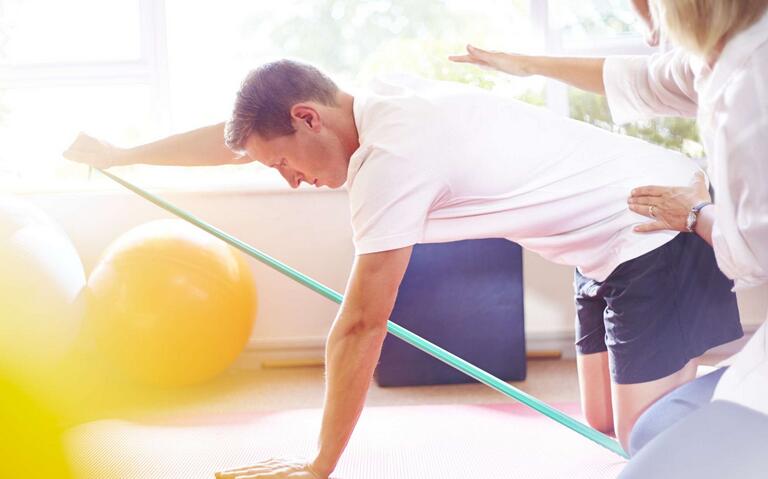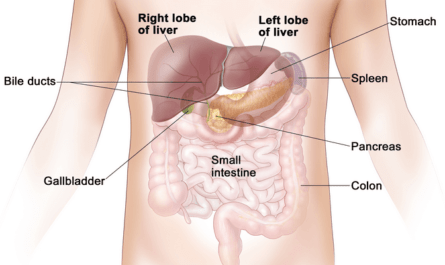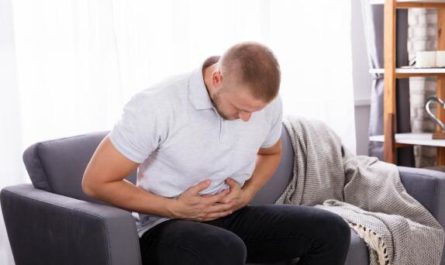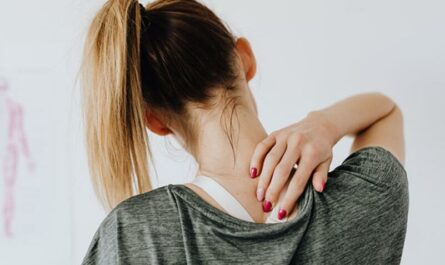Dealing with pain above the right hip can be a bothersome experience. Understanding the underlying causes can help you find relief and appropriate treatment. This article will delve into the various factors that could lead to right-side pain above the hip. From musculoskeletal issues to internal organ problems, we will cover everything you need to know to gain insights and make informed decisions.
What is Right Side Pain Above the Hip?
Before delving into the causes, let’s define what we mean by “right-side pain above the hip.” This refers to any discomfort or pain experienced in the region between the lower ribs and the pelvis on the right side of the body. Such pain can be caused by various underlying issues, ranging from minor muscle strains to more serious medical conditions.

Organs Located Near or Above the Right Hip
- Liver: The liver is the largest internal organ in the human body and is situated on the right side of the abdomen, just below the diaphragm and above the right hip. It performs essential functions like metabolizing nutrients, detoxifying harmful substances, and producing bile for digestion.
- Gallbladder: The gallbladder is a small, pear-shaped organ located under the liver on the right side. It stores and concentrates bile produced by the liver, releasing it into the small intestine to aid in the digestion of fats.
- Right Kidney: The right kidney is one of the paired kidneys responsible for filtering waste and excess fluids from the blood. It is situated in the upper abdominal area, slightly above the right hip, and is protected by the ribcage.
- Ascending Colon: Part of the large intestine, the ascending colon runs vertically on the right side of the abdomen, starting from the cecum (a pouch-like structure at the end of the small intestine) and extending up towards the liver.
14 Common Causes of Right Side Pain Above Hip
1. Muscle Strain
One of the most common causes of right side pain above the hip is muscle strain. This occurs when the muscles in the hip area are overused, stretched, or torn due to activities such as heavy lifting, sudden movements, or repetitive motions. The pain can be sharp or achy and may worsen with certain movements.
To treat a muscle strain, it is crucial to rest the affected area and avoid any activities that exacerbate the pain.
Applying ice packs to the area for 15-20 minutes every few hours during the first 48 hours can help reduce inflammation. Gentle stretching and strengthening exercises under the guidance of a physical therapist can aid in the healing process.
2. Hip Flexor Tendinitis
Hip flexor tendinitis refers to the inflammation or irritation of the tendons that connect the hip flexor muscles to the bone. This condition is often seen in athletes who engage in activities that require repetitive hip flexor movements, such as running or cycling.
Rest is essential in managing hip flexor tendinitis. Avoiding activities that worsen the pain is crucial for the healing process. Physical therapy, including stretching and strengthening exercises, can help improve flexibility and reduce strain on the tendons.
3. Hip Bursitis
Hip bursitis occurs when the bursae, small fluid-filled sacs that cushion the hip joint become inflamed. This inflammation can lead to pain and tenderness on the right side above the hip.
In mild cases, resting the hip and avoiding activities aggravating the pain can be sufficient. Applying ice packs and taking over-the-counter anti-inflammatory medications may also provide relief. A doctor may recommend physical therapy or corticosteroid injections for more severe cases.
4. Kidney Stones
While kidney stones typically cause pain in the lower back or abdomen, they can sometimes lead to referred pain in the right side above the hip. Kidney stones are hard mineral and salt deposits that form in the kidneys.
Treatment for kidney stones may involve pain management with medications, increased fluid intake to help flush out the stones, and, in some cases, medical procedures to break up or remove the stones.
5. Appendicitis
Appendicitis is the inflammation of the appendix, a small organ located on the lower right side of the abdomen. In some cases, the pain from an inflamed appendix can be felt above the right hip.
Appendicitis is a medical emergency, and immediate surgical removal of the inflamed appendix is typically required to prevent complications.
6. Ovarian Cysts
Ovarian cysts are fluid-filled sacs that can develop in or on the ovaries. When they grow large or rupture, they can cause pain on the right side above the hip in women.
Treatment for ovarian cysts may vary depending on the size and severity. In many cases, small cysts resolve on their own, but larger ones may require medical intervention or surgery.
7. Hernia
A hernia occurs when an organ or fatty tissue pushes through a weak spot in the surrounding muscle or connective tissue. In some cases, a hernia in the abdominal area can cause referred pain above the right hip.
Treatment for hernias typically include surgical repair to push the protruding tissue back into place and strengthen the weakened area.
8. Gallbladder Issues
Gallbladder problems, such as gallstones or gallbladder inflammation, can cause pain in the upper right abdomen that may radiate to the right side above the hip.
In mild cases, dietary changes and medication may be sufficient to manage gallbladder issues. However, more severe cases may require surgical removal of the gallbladder.
9. Gastrointestinal Issues
Various gastrointestinal issues, such as irritable bowel syndrome (IBS), colitis, or gas, can cause referred pain in the right side above the hip.
Treatment for gastrointestinal issues includes dietary modifications, medication, or other therapies, depending on the specific condition.
10. Hip Fracture
A hip fracture can cause severe pain in the hip area in older adults or individuals with weakened bones.
Hip fractures require immediate medical attention and often involve surgical repair and rehabilitation.
11. Sciatica
Sciatica occurs when the sciatic nerve, which runs from the lower back down to the legs, becomes compressed or irritated. This can lead to pain that radiates from the lower back to the right side above the hip.
Treatment for sciatica include pain management, physical therapy, and addressing the underlying cause of the compression.
12. Osteoarthritis
Osteoarthritis is a degenerative joint disease that can affect the hip joint, causing pain and stiffness in the area.
Treatment for osteoarthritis may include pain relief medications, physical therapy, and lifestyle changes to manage symptoms.
13. Pelvic Inflammatory Disease (PID)
PID is an infection of the female reproductive organs, and it can cause pain on the right side above the hip in some cases.
PID requires prompt medical attention and is typically treated with antibiotics.
14. Endometriosis
Endometriosis is a condition where the tissue that lines the uterus grows outside the uterus, causing pain and discomfort. In some cases, it can lead to pain above the right hip.
Treatment for endometriosis may involve pain management, hormone therapy, or surgery to remove the abnormal tissue.

How to Relieve Right Side Pain Above the Hip
1. Stretching and Gentle Exercises
One of the first steps to ease right side pain above the hip is to incorporate gentle stretching and exercises into your daily routine. Focus on hip stretches that target the specific area of discomfort. Engaging in low-impact exercises, such as swimming or walking, can also help strengthen the muscles around the hip and alleviate pain.
2. Applying Heat or Ice Packs
Applying heat or ice packs to the affected area can provide immediate relief from pain and inflammation. Use a heating pad or a warm compress for muscle relaxation or an ice pack to reduce swelling. Remember to use a cloth barrier to prevent direct contact with the skin.
3. Over-the-Counter Pain Relievers
For temporary relief, consider taking over-the-counter pain relievers, such as ibuprofen or acetaminophen. Always follow the recommended dosage and consult with a healthcare professional if you have any existing medical conditions.
4. Maintain Proper Posture
Improper posture can strain the muscles around the hip, leading to pain and discomfort. Be mindful of your posture while sitting, standing, and walking. Invest in an ergonomic chair or use a lumbar cushion to support your lower back and maintain proper alignment.
5. Rest and Recovery
Sometimes, all your body needs is sufficient rest and recovery to heal naturally. Avoid strenuous activities that aggravate the pain and ensure you get enough sleep each night to facilitate healing.
6. Gentle Massage Therapy
A gentle massage can do wonders for relieving tension and pain in the hip area. Consider scheduling a session with a licensed massage therapist who specializes in working with hip pain and discomfort.
7. Stay Hydrated
Dehydration can exacerbate muscle cramps and cause additional discomfort. Ensure you stay hydrated by drinking plenty of water throughout the day. Hydration supports muscle function and can aid in reducing pain.
8. Core Strengthening Exercises
Strengthening your core muscles can alleviate pressure on the hip area and improve overall stability. Engage in exercises that target your abdominal muscles, such as planks and leg raises.
9. Physical Therapy
If the pain persists or worsens, consider seeking the help of a physical therapist. They can assess your condition and design a personalized exercise and rehabilitation plan to address the root cause of your right side pain above the hip.
10. Healthy Diet
A balanced diet rich in essential nutrients can promote overall joint and muscle health. Incorporate foods with anti-inflammatory properties, such as fatty fish, nuts, and leafy greens, into your meals.
11. Avoid Heavy Lifting
If you are experiencing right side pain above the hip, avoid heavy lifting or carrying objects that put excessive strain on your hip muscles. Ask for help when needed and use proper lifting techniques.
12. Yoga and Pilates
Yoga and Pilates can help improve flexibility and strengthen the muscles around the hip area. Engage in classes or follow online tutorials specifically tailored for hip pain relief.
5 Best Exercises to Alleviate Right Side Hip Pain
1. Hip Flexor Stretch
The hip flexor stretch is a simple yet highly effective exercise for easing right side hip pain. It helps to release tension in the hip flexor muscles, which are often tight due to prolonged sitting or excessive physical activity. To perform this exercise:
- Start in a kneeling position, with your right knee on the ground and the left foot forward.
- Keep your back straight and gently push your hips forward, feeling the stretch in the front of your right hip.
- Hold the stretch for 30 seconds, then switch to the other side.
This exercise can be done daily and is particularly beneficial for individuals with sedentary lifestyles.
2. Glute Bridge
Strengthening the glute muscles can help support the hips and alleviate pain. The glute bridge exercise is ideal for targeting the glutes and lower back. Follow these steps:
- Lie on your back with your knees bent and feet flat on the ground.
- Lift your hips off the floor, squeezing your glutes at the top.
- Lower your hips back down and repeat for 15-20 repetitions.
Incorporating the glute bridge into your routine can improve hip stability and reduce discomfort.
3. Piriformis Stretch
The piriformis muscle is located deep within the glutes and can contribute to hip pain when tight. Stretching the piriformis can provide significant relief. Here’s how to do it:
- Lie on your back with both knees bent.
- Cross your right ankle over your left knee.
- Gently pull your left knee toward your chest until you feel a stretch in your right glute.
- Hold the stretch for 20-30 seconds and switch sides.
Performing this stretch regularly can help reduce tension in the piriformis muscle and alleviate right side hip pain.
4. Hip Abduction Exercise
Weak hip abductor muscles can lead to imbalances and hip pain. The hip abduction exercise targets these muscles and helps improve hip stability.
- Lie on your side with your legs stacked on top of each other.
- Lift the top leg upward, keeping it straight, and lower it back down.
- Complete 15-20 repetitions on each side.
Strengthening the hip abductor muscles can enhance your overall hip function and reduce pain.
5. Quadriceps Stretch
The quadriceps muscles in the front of your thighs can also impact hip pain. Stretching the quads can alleviate pressure on the hips and promote flexibility. Here’s how to do it:
- Stand with your feet shoulder-width apart.
- Bend your right knee and bring your heel toward your buttocks.
- Hold your right ankle with your right hand, keeping your knees close together.
- Hold the stretch for 20-30 seconds and switch sides.
When to Seek Medical Attention?
While some cases of right-side pain above the hip may resolve with rest and self-care, it is crucial to know when to seek medical attention. Consult a healthcare professional if:
- The pain is severe and persistent.
- The pain is accompanied by other concerning symptoms like fever, nausea, or vomiting.
- You experience difficulty in passing urine or notice blood in your urine.
- The pain worsens with movement or deep breathing.
- The pain is sudden and intense, particularly if it feels like a stabbing sensation.






